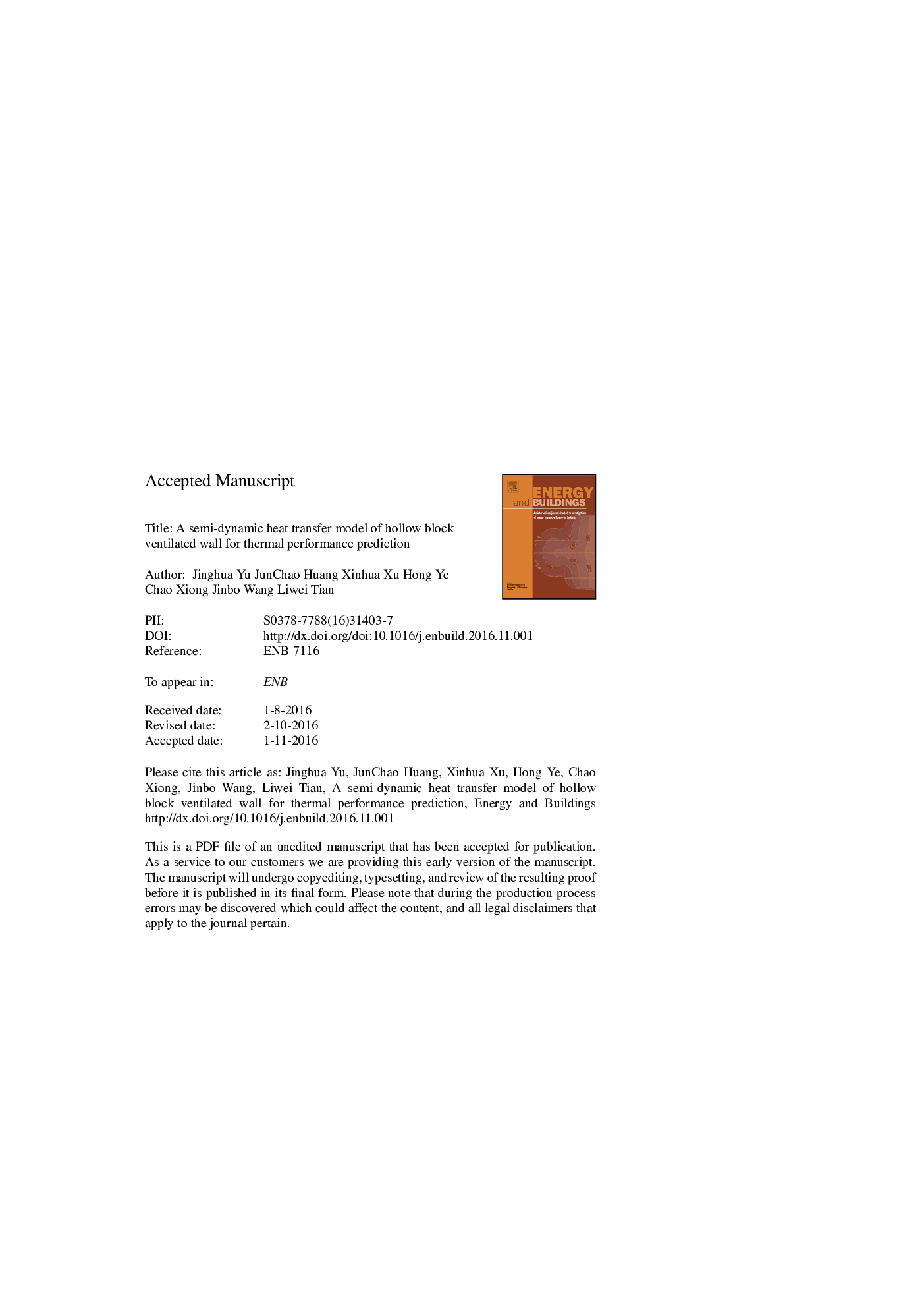| Article ID | Journal | Published Year | Pages | File Type |
|---|---|---|---|---|
| 4914266 | Energy and Buildings | 2017 | 28 Pages |
Abstract
The hollow block ventilated wall is a new kind of ventilated wall, the exhaust air of HVAC system is used as the supply air to flow through the cavity of this wall in this paper. The heat or cool storage in the wall is reduced by using the heat recovery technology; the temperature of internal surface is lowered in summer and increased in winter, and the human thermal comfort is enhanced. A semi-dynamic heat transfer model of the ventilated wall is presented for thermal performance prediction. The dynamic optimized resistance-capacitance (ORC) model and the number of transfer units (NTU) model are joined together to develop the semi-dynamic heat transfer model of this ventilated wall. The experimental study is carried out for validating the semi-dynamic heat transfer model. The maximum relative error is 4.3% for mean internal and external surface temperatures, and it is 2.6% for the outlet air temperature of the cavity. The heat transfer model established for hollow block ventilated wall is fairly reasonable and possesses high accuracy. This model can be used to predict the surface temperature of the hollow block ventilated wall and the heat flux removed by the airflow in the cavity for performance evaluation.
Related Topics
Physical Sciences and Engineering
Energy
Renewable Energy, Sustainability and the Environment
Authors
Jinghua Yu, Junchao Huang, Xinhua Xu, Hong Ye, Chao Xiong, Jinbo Wang, Liwei Tian,
